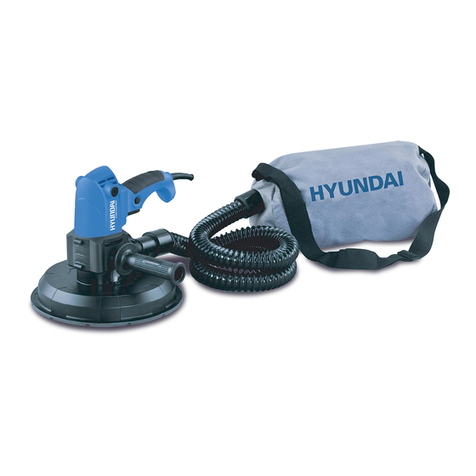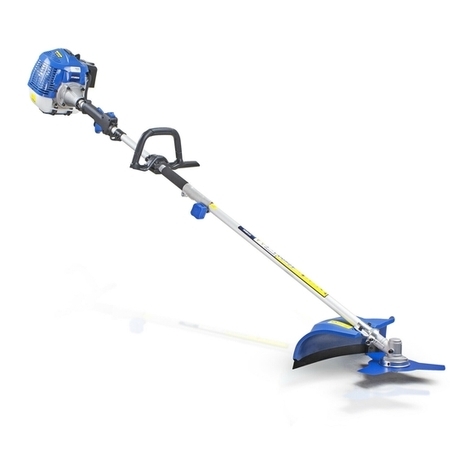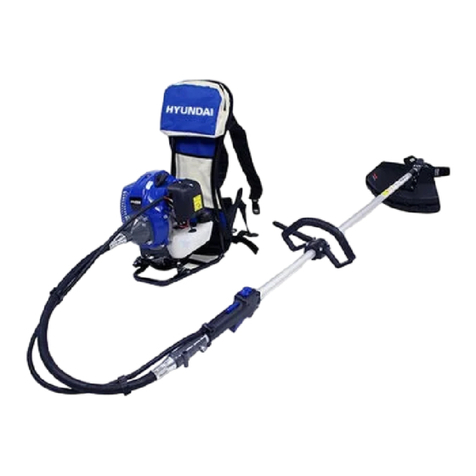
5
Observe the laws and regulations for proper disposal for gasoline, oil, etc. to protect the environment.
Store the machine out of reach of children, and do not leave anyone without experience with the
machine or instructions for use. The machine is dangerous for untrained users.
f) Review
Before cleaning, repairing, inspecting or adjusting the machine, turn off the engine and make sure that moving
parts are at a standstill. Always make sure that the engine switch is in the "OFF" position. Disconnect the spark
plug, and keep the cable away from the spark plug to prevent accidental starting.
Have the machine serviced by qualified personnel using identical spare parts. This will ensure that the safety of
the machine is maintained
General safety rules
To avoid injury, keep hands, fingers, and feet away from the base plate. Hold the handle of the plate
compactor firmly with both hands. If both hands hold the handle and feet are away from the compactor
base, your hands, fingers and feet cannot be injured by the base.
Always operate the machine from behind, never drive past the machine while the engine is running.
Never place the tool or other element under the compactor plate.
If the unit strikes a foreign object, stop the engine, disconnect the spark plug, inspect the machine
carefully, and repair any damage before restarting and operating the machine.
Do not overload the capacity of the machine by compacting too deeply in one pass or at too high a speed.
Never operate the machine at a high speed on hard or slippery surfaces.
Exercise extreme caution when working or crossing paths, pedestrian paths or roads. Stay alert for hidden
dangers and traffic. Do not carry a passenger.
Never leave the plate compactor in the operating position and leave it unattended while the engine is
running.
Always stop the engine if the compaction is delayed, or going from one place to another.
Stay clear of edge of ditches and avoid actions that could spill the plate compactor.
Always climb the slopes carefully, in the upward direction or across the slopes so that the plate compactor
does not tip over the operator.
Always park the unit on a firm, level surface and cut the machine.
To reduce vibration exposure, limit operating hours and take breaks to minimize repetition and rest your
hands. Reduces the speed and strength with which you make repetitive movements. Try to do daily work
for which hand-held equipment is not required.
When using, complete protective equipment must be worn, including at least non-slip safety shoes, eye,
hearing and respiratory protection.Also wear protective gloves.
Untrained, inexperienced and unfamiliar users will need to be properly trained to use the tool through a
competent person.
The operator and staff should familiarize themselves with the instruction manual before using the
machine;
The machine must remain stable. It must be used on stable ground. Remove all materials and avoid any
areas and situations that could make the machine unstable.
The machine must be put into service only when it meets all the safety and use precautions, stability,
surface condition, track width and the relation between the widths of the drum and, by for example, the
height of the edges and / or edges and / or the depth of the ditches should be taken into account.
The user of the machine must determine if there are particular risks when operating the machine, such as






































